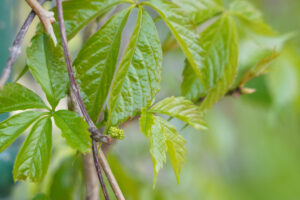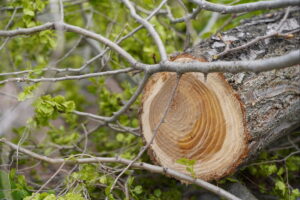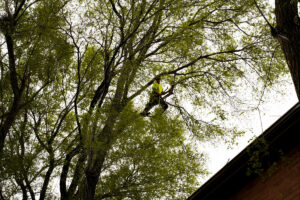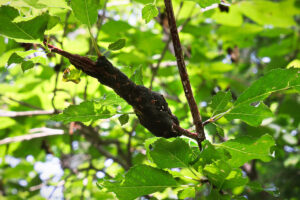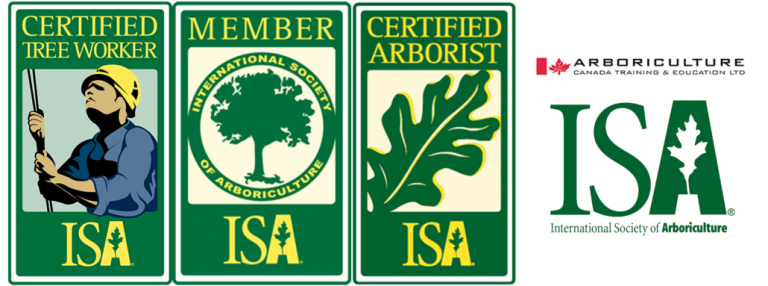The phrase “strong as an oak” gives us the impression that trees are powerful plants, and they are. They can live for centuries, support a treehouse, and endure harsh weather, but it’s also true that even “mighty oaks fall.” In fact, like any plant on your property, your trees need regular and consistent care. There can be serious costs to not caring for your trees. Failing to give them that integral attention can allow your trees to starve, wilt, contract diseases, become exposed to pests, and even die with a costly removal. We’ll go over the kinds of problems neglect can create and how to care for your tree to give them a long and healthy life.
Pruning and Pest Removal
Regular pruning is one of the best ways to care for your tree. In turn, failing to prune can have significant costs. Letting your tree grow freely will allow it to approach powerlines, your home, or other buildings damaging these and the tree itself. Dead or damaged branches that are not trimmed can fall and cause damage, and these same injured branches are access points for pests and diseases. Pruning, along with pesticides in serious cases, also allows for the removal of diseased or infested branches, preventing them from spreading throughout the entire tree.
Pruning prevents your tree from suffering harm and provides direct benefits. It helps shape the tree’s growth for aesthetic appeal and structural strength. Trimming removes old growth to help foster new ones, and this helps fruit trees be more productive. Leaving off pruning can cause the tree to grow additional dominant branches that will grow out from the main trunk and impair the tree’s structural strength. Preventing those structural defects will help ensure the tree itself or a section does not fall. In addition, that shaping will enhance the tree’s natural beauty, and pruning can safely thin the canopy to allow sunlight to penetrate through.
Watering
Trees, like any plant, need water. Without water the tree will begin to wilt, wither, and could eventually die. It can be easy to spot a thirsty tree. Its leaves are smaller than usual, beginning to wilt, turning yellow or another Fall colour early, and/or becoming brown on the edges. For conifers, needles are their leaves, and they will begin to brown and fall when the tree is dehydrated.
Regular rain can provide enough water for established, older trees. However, younger trees, those in their first two years of planting, need more regular watering and should be watered every few weeks and even more when the weather is dry. Older, more established trees will have larger root systems to store more water, but when it has not rained for over a month, it’s best to provide even your old trees with a drink.
Tree watering is a gradual process. Use a hose or soaker hose with holes to slowly dribble water around the trunk and in different areas to cover the roots. Watering bags are another solution for younger trees. They slowly soak water into the soil around the trunk. Be sure to remove these bags and don’t water when temperatures fall below 0°C or are about to. This can damage the tree’s trunk and roots. Provide ample water before temperatures freeze, especially evergreens which need more water in the winter. Additionally, mulching around the trunk will help the soil retain moisture.
Too much water is also harmful to your tree, so do not overwater and drown the tree. This will prevent the roots from taking in oxygen. If your tree is receiving too much water, the leaves may appear a healthy green but will be fragile and break at your touch. New growth on the tree will be light green or yellow and quickly wither and die. Leave off watering if you notice these symptoms.
Soil
It’s not just the water in the dirt that ensures your tree’s health but the nutrients in the soil. Each tree species prefers specific soil nutrients, pH level (acidity and alkalinity), and moisture. Nutrients allow your tree to photosynthesize, repair itself, and grow. A proper pH level allows a tree to absorb those nutrients from the soil. You will plant your tree in the optimal conditions; however, those factors can change over the tree’s life and need to be monitored.
Your tree’s soil needs care to stay supportive or it could cost you. Lacking proper nutrition quickly impairs a tree’s health. The tree will wilt and show little to no new annual growth. Without the necessary nutrients to create food, the tree will begin to starve, be unable to repair itself, and become vulnerable to disease. Ultimately, it will wither and die.
To ensure your tree’s environment is nurturing, have the soil regularly tested to determine its nutrient and pH levels. This will decide what kind and how much enhancement the tree’s soil needs. Fertilizing, mulching, and trenching all enhance the tree’s soil. Moreover, fertilizers can provide a quick recovery but should be applied carefully. Fertilizer is like medicine: “The dose makes the poison.” Too little and the tree will still lack the necessary nutrients. Too much will make the soil toxic for the tree.
Attention is Essential
Caring for your trees before it costs you ultimately relies on being attentive and providing annual maintenance. Advanced Tree Care provides professional pruning, structural reinforcement, pest and disease control, and soil enhancement. Some damage, like that caused by storms, cannot be prevented. However, our professional storm damage cleanup and assessment reduces the risk to the trees and their surroundings. Our consistent and high quality arborists will ensure your trees don’t end up costing you later. Being attentive will also let you quickly discover when your trees begin to display signs of problems. If you are unsure what might be affecting your trees, book a consultation with Advanced Tree Care.


